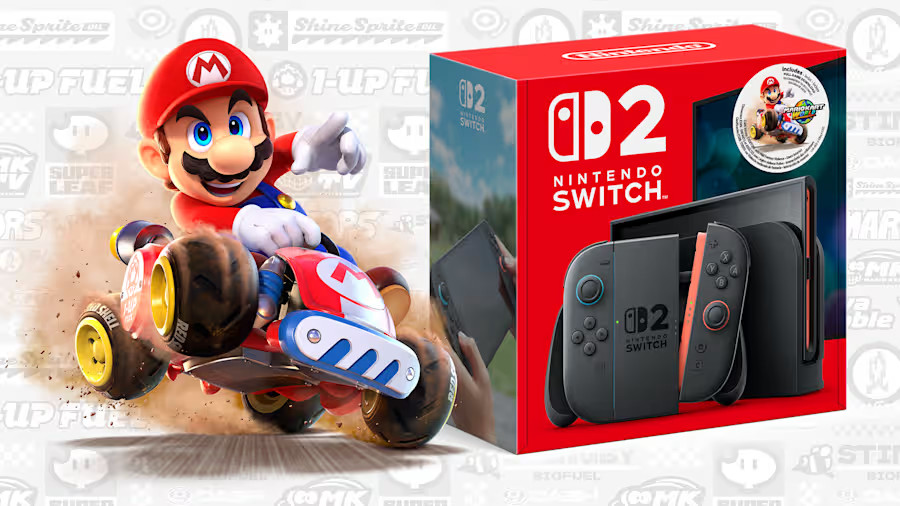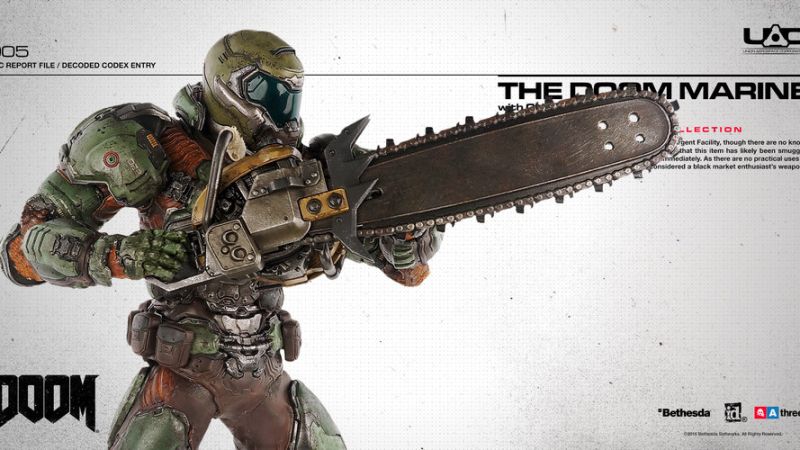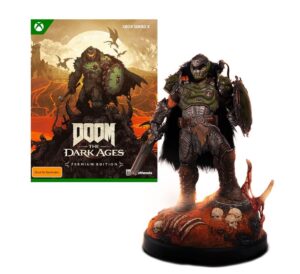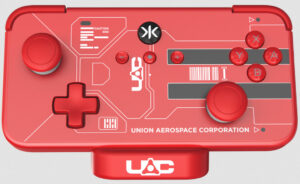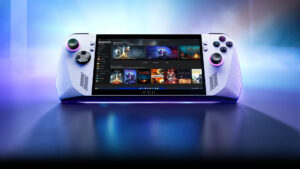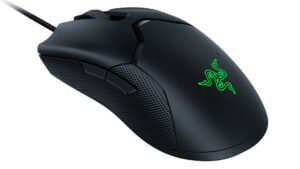- Gaming
- GamingGaming reviews, news and comparisons.
- PlayStation
- XBoxXBox news, reviews and more.
- Nintendo Switch 2Nintendo Switch 2 news, reviews and more.
- Collectors EditionsCollectors edition news, reviews and more.
- ControllersController news, reviews and more.
- Handhelds
- Audio
- HeadphonesHeadphone news, reviews and more.
- PC SpeakersPC Speaker news, reviews and more.
- SoundbarsSoundbar news, reviews and more.
- Smartphones
- Tablets
- PC’sPC reviews, news and comparisons.
- PC’sPC reviews, news and comparisons.
- Monitors
- Graphics CardsGraphics Card news, reviews and more.
- KeyboardsKeyboard news, reviews and more.
- Mice
- Mouse PadsMouse Pad news, reviews and more.
- Laptops
- LaptopsLaptop reviews, news and comparisons.
- Cooling PadsLaptop cooling pad news and information.
- Streaming
- WearablesWearable reviews, news and comparisons.
- Cameras
- CollectibleFigure news, reviews and more.
- Shop
- Gaming
- GamingGaming reviews, news and comparisons.
- PlayStation
- XBoxXBox news, reviews and more.
- Nintendo Switch 2Nintendo Switch 2 news, reviews and more.
- Collectors EditionsCollectors edition news, reviews and more.
- ControllersController news, reviews and more.
- Handhelds
- Audio
- HeadphonesHeadphone news, reviews and more.
- PC SpeakersPC Speaker news, reviews and more.
- SoundbarsSoundbar news, reviews and more.
- Smartphones
- Tablets
- PC’sPC reviews, news and comparisons.
- PC’sPC reviews, news and comparisons.
- Monitors
- Graphics CardsGraphics Card news, reviews and more.
- KeyboardsKeyboard news, reviews and more.
- Mice
- Mouse PadsMouse Pad news, reviews and more.
- Laptops
- LaptopsLaptop reviews, news and comparisons.
- Cooling PadsLaptop cooling pad news and information.
- Streaming
- WearablesWearable reviews, news and comparisons.
- Cameras
- CollectibleFigure news, reviews and more.
- Shop
Now Reading: Nintendo Switch 2 vs Nintendo Switch OLED
-
01
Nintendo Switch 2 vs Nintendo Switch OLED
- Gaming//
- Gaming//Gaming reviews, news and comparisons.
- PlayStation//
- XBox//XBox news, reviews and more.
- Nintendo Switch 2//Nintendo Switch 2 news, reviews and more.
- Collectors Editions//Collectors edition news, reviews and more.
- Controllers//Controller news, reviews and more.
- Handhelds//
- Audio//
- Headphones//Headphone news, reviews and more.
- PC Speakers//PC Speaker news, reviews and more.
- Soundbars//Soundbar news, reviews and more.
- Smartphones//
- Tablets//
- PC’s//PC reviews, news and comparisons.
- PC’s//PC reviews, news and comparisons.
- Monitors//
- Graphics Cards//Graphics Card news, reviews and more.
- Keyboards//Keyboard news, reviews and more.
- Mice//
- Mouse Pads//Mouse Pad news, reviews and more.
- Laptops//
- Laptops//Laptop reviews, news and comparisons.
- Cooling Pads//Laptop cooling pad news and information.
- Streaming//
- Wearables//Wearable reviews, news and comparisons.
- Cameras//
- Collectible//Figure news, reviews and more.
- Figures//Figure news, reviews and more.
- Replicas//Replica news, reviews and more.
- Shop//
- Home
- Gaming
- Nintendo Switch 2
- Nintendo Switch 2 vs Nintendo Switch OLED
Nintendo Switch 2 vs Nintendo Switch OLED
Tommy CNintendo Switch 21 year ago279 Views


Design and Build
Nintendo Switch 2: Features a larger, more robust design with a 7.9-inch screen. It includes ergonomic tweaks, a sturdier full-body kickstand with multiple angles, dual USB-C ports, and an upgraded cooling system with an onboard fan. The Joy-Con 2 controllers attach magnetically, offering a more secure connection compared to the rail system of previous models. It maintains a sleek look with a glossy trim but reverts to an LCD display instead of OLED.
Nintendo Switch OLED: Sports a 7-inch OLED screen with slimmer bezels compared to the original Switch, housed in a refined frame. It has a wide, adjustable kickstand (an improvement over the original Switch’s flimsy one) and a dock with an integrated LAN port. It weighs slightly more than the original Switch at 420g with Joy-Cons attached.
Display
Nintendo Switch 2: Equipped with a 7.9-inch LCD screen boasting 1080p resolution, HDR support, and a 120Hz refresh rate. While it lacks the deep blacks and high contrast of an OLED, it gets brighter, making it better for outdoor play, and the higher resolution and refresh rate enhance responsiveness and visual clarity.
Nintendo Switch OLED: Features a 7-inch OLED screen with a 720p resolution (1080p when docked). The OLED panel delivers vibrant colors, true blacks, and excellent contrast, making it visually superior in terms of color quality, though it lacks HDR and is capped at a 60Hz refresh rate.
Performance
Nintendo Switch 2: Powered by a new custom Nvidia chip with significantly improved CPU and GPU performance (rumored to include 12GB of RAM). It supports 4K output when docked and up to 120fps in handheld mode, offering a major leap over its predecessors. It also includes AI features like DLSS for upscaling and enhanced graphics.
Nintendo Switch OLED: Uses the same Nvidia Tegra X1 chipset and 4GB of RAM as the original Switch, with no performance upgrades. It runs at 720p handheld and 1080p docked, with no support for higher frame rates or 4K, making it less powerful than the Switch 2.
Storage
Nintendo Switch 2: Comes with 256GB of internal storage, expandable via microSD Express cards (up to 2TB), providing much more space for games and faster load times compared to earlier models.
Nintendo Switch OLED: Offers 64GB of internal storage, double that of the original Switch’s 32GB, and supports microSD cards up to 2TB. However, it’s still limited compared to the Switch 2’s capacity.
Battery Life
Nintendo Switch 2: Battery life ranges from 2.5 to 6.5 hours, depending on usage. The increased power demands of its advanced hardware result in shorter battery life compared to the OLED model.
Nintendo Switch OLED: Provides 4.5 to 9 hours of battery life, benefiting from the efficiency of the OLED screen and the same hardware as the original Switch, making it more enduring for extended play sessions.
Audio and Features
Nintendo Switch 2: Includes improved front-firing speakers with 3D audio support and a built-in noise-canceling microphone for voice chat via a new “C” button. It also introduces mouse-like functionality with the Joy-Con 2’s optical sensors.
Nintendo Switch OLED: Features upgraded speakers that are louder and clearer than the original Switch’s, but lacks 3D audio or a built-in microphone, relying on external solutions for voice chat.
Price
Nintendo Switch 2: Retails at $449.99 standalone, or $499.99 bundled with Mario Kart World, reflecting its next-gen capabilities and upgrades.
Nintendo Switch OLED: Priced at $349.99, it’s a more affordable option but lacks the performance enhancements of the Switch 2.
Backwards Compatibility
Nintendo Switch 2: Offers full backwards compatibility with existing Switch games, with some titles receiving “Switch 2 Edition” enhancements like improved graphics and frame rates.
Nintendo Switch OLED: Plays all Switch games natively, but without any performance boosts beyond the visual improvement of the OLED screen.
Summary
Choose the Switch 2 if you want cutting-edge performance (4K docked, 120Hz handheld), a larger screen, more storage, and future-proofing for new games. It’s ideal for those prioritizing power and responsiveness over display type, though it sacrifices battery life and OLED quality.
Choose the Switch OLED if you value the superior color and contrast of an OLED screen, longer battery life, and a lower price point, and don’t need the extra power or resolution. It’s a great option for handheld-focused players who already own a robust game library.
The Switch 2 is a significant upgrade in power and features, while the Switch OLED remains a strong choice for its display quality and affordability. Your decision depends on whether you prioritize performance or visual fidelity.
Related Posts
Stay Informed With the Latest & Most Important News
Previous Post
Next Post
Gaming4 weeks ago
GTA 6 (VI) New Screenshots















